.webp)
The Grounds Guys explain the main types of trees and their characteristics, helping homeowners make informed landscaping choices.
|
Selecting trees for your property begins with identifying and understanding the different tree types. Some trees offer shade in the summer and let sunlight in during the winter; others have brilliant fall colours, and many trees provide food and shelter for small animals and welcome birds to your yard throughout the year.
Table of Contents:
How Many Types of Trees Are There?
There are over 60,000 types of trees in the world. But generally, trees in the US and Canada are grouped into two primary categories: deciduous and coniferous.
In general, deciduous trees are ones that shed their leaves annually. While coniferous trees have cones, needles, or scales that remain on the tree throughout the year.
If you’re wondering, “What type of tree do I have in my yard,” the best way to identify them is by examining the bark, leaves, seeds, or cones.
Related Content: Best Time to Transplant and Plant Trees
Tree Identification: Deciduous Trees vs. Coniferous Trees
There are several differences between deciduous and coniferous trees, including the following:
Different Leaves
Deciduous trees have leaves in star, heart, and oval shapes, depending on the species. No matter the shape, these leaves are green in the spring and summer and turn red, yellow, and orange in the fall.
Coniferous trees have needles, cones, or scales instead of leaves, which come in various lengths, sizes, and thicknesses—but they’re always very visually different from leaves.
Seasonal Changes
Deciduous trees drop their colourful fall leaves during the winter or cold season to conserve energy and prepare for hibernation.
Conifers typically keep their cones, needles, or scales throughout the winter, which is why they’re also called evergreens. However, there are a few species of conifers that are not considered evergreens and will drop their needles, like the bald cypress and larch tree.
How They Reproduce
The easiest way to tell a deciduous tree from a coniferous tree is by its cones or seeds.
Deciduous trees use seeds and flowers to reproduce. This tree type requires pollination to produce fertilized seeds, aka “fruit.”
Coniferous trees produce pinecones with seeds inside to reproduce. Cones are compact, sturdy compartments to house seeds as they drop and are carried away by wildlife.
Types of Deciduous Trees
Three of the most common types of deciduous trees in Southern Canada include:
Birch
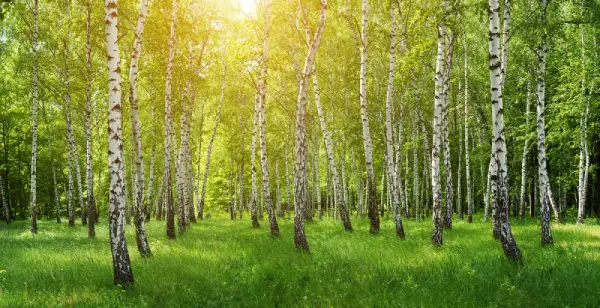
Birches are known for their smooth, white, and black bark. There are roughly 40 species of birch trees. Some of the most common are paper, river, gray, white, and yellow. Birch leaves are egg-shaped or triangular and have toothed edges.
Maple
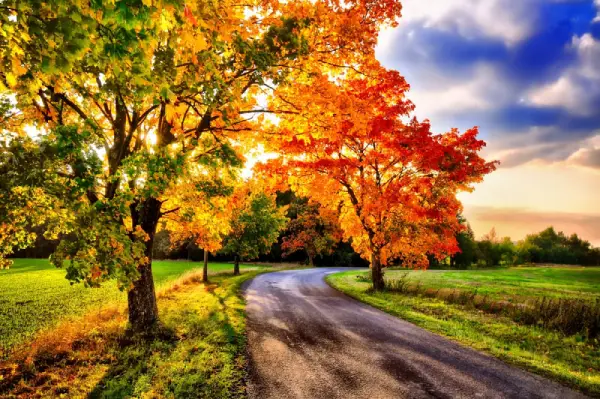
There are around 200 species of maple trees and shrubs. Red, sugar, and silver are some of the more common. Maples are great for providing shade with their large leaves and produce some of the most beautiful colours in the fall, making them a desirable tree for landscaping.
Oak
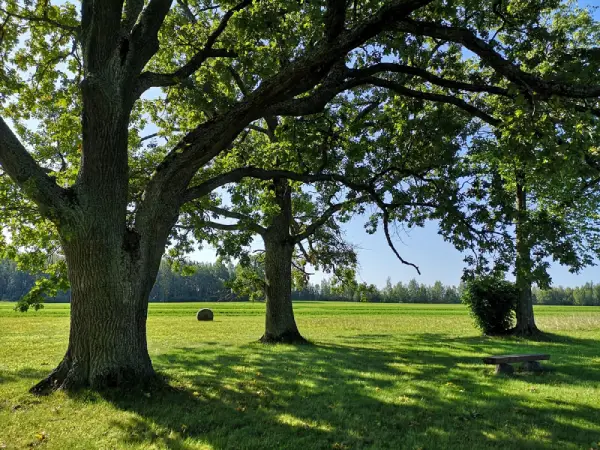
There are roughly 450 species of oak trees. Oaks have board, flat leaves with toothed edges in some species. Acorns are the “fruit” of oak trees, and they’re commonly used as lumber in construction or furniture.
Other common deciduous trees include:
- Chestnut
- Hickory
- Dogwood
- Beech
- Walnut
Benefits of Deciduous Trees:
- The same deciduous tree that shades your house in the summer drops its leaves in the winter and lets sunlight filter through its bare branches to help warm your home.
- Many deciduous trees, such as maples, offer a variety of colours in autumn when their leaves change.
- Some deciduous trees, such as birches and crape myrtle, have exfoliating bark that provides a beautiful winter visual.
- Other deciduous tree types can help feed your family. Plant fruit and nut trees for their bountiful harvests and shade appeal.
- Short on space? Unleash your creativity by pruning a fruit tree against a flat surface—a technique called espaliering.
Related Content: Which Fruit Bearing Trees to Plant in the North
Types of Coniferous Trees
The most common coniferous trees in Canada include the following:
Bald Cyprus
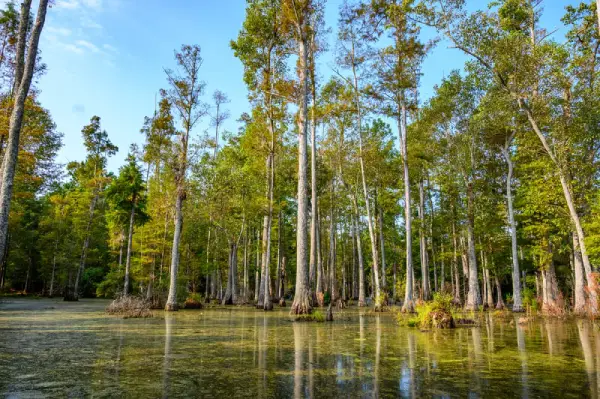
This tree gets its name because it is one of the coniferous trees that sheds its needles, aka “leaves,” in the winter. This tree’s needles are narrow, flat, and spiral around the stem. When they drop in the winter, they turn from a dark green shade to a reddish-brown colour.
Cedar
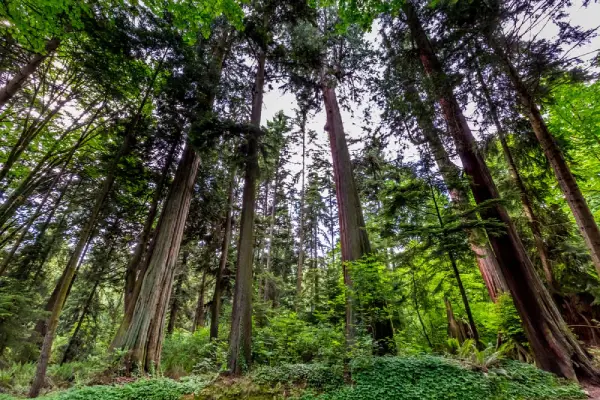
While cedar trees are not considered native to most regions in North America, they have become a common tree. Cedars have roughly 60 species with scale-like leaves that are less than ½ inch and can be prickly in some species. Cedar bark is reddish, peeling, and vertically furrowed. The cones of the cedar tree are variable in size and can range from berry sized to oblong bell shapes that are about 1 inch in length.
Douglas Fir
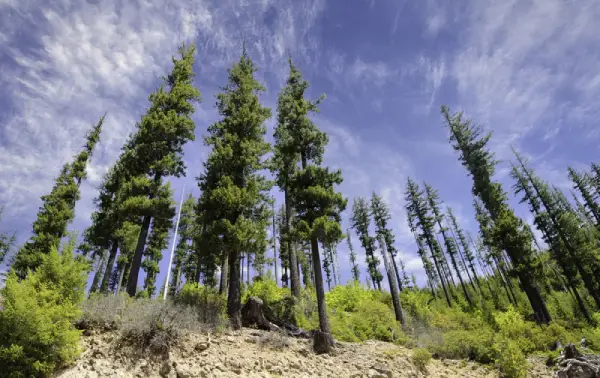
Douglas fir is native to the western coast of North America and British Columbia and can grow up to 300 feet tall. Depending on the variety of Douglas fir, it may have yellow-green or blue-green needle clusters. The cones on Douglas firs are light brown and have unique forked bracts between their scales. Douglas firs are frequently used as Christmas trees due to their soft needles and beautiful colour.
Pine
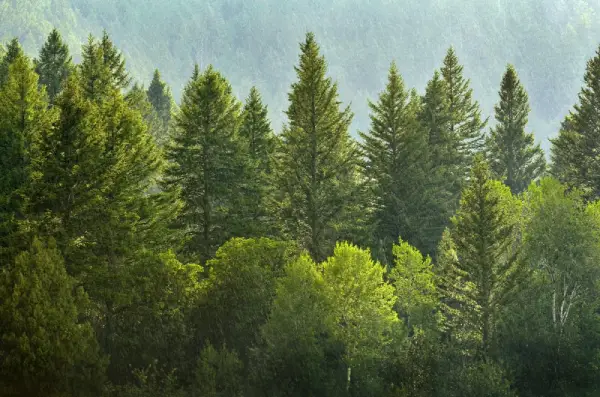
There are around 105 and 125 recognized species of pine trees. Depending on the variety, their needles can be short or long and range in colour from yellow-green to dark green. Common types of pine include white pine, sugar pine, red pine, and pitch pine.
Other examples of conifer trees include:
- Hemlock
- Larch
- Redwood
- Spruce
Benefits of Coniferous Trees:
- Evergreen trees not only shade your home in the summer but also provide a windscreen to block harsh winter winds.
- Coniferous tree types provide a year-round privacy fence. Spacing small trees according to the species recommendation will enable them to form a green screen as they mature.
- Birds and small mammals often seek refuge in evergreen trees, particularly during the winter.
Need Help Keeping Your Trees Healthy?
Remember, not all trees do well in all areas. When planning your landscape design, consider options that includes deciduous and coniferous species that are designated for your region. Beyond providing beautiful aesthetics, strategically placed trees can help lower your heating and cooling costs. If you need assistance, The Grounds Guys provide tree work services to help you choose suitable tree species that will thrive in your area. We can help you identify the trees currently on your property and recommend the best ways to care for them. Contact us today to get started.